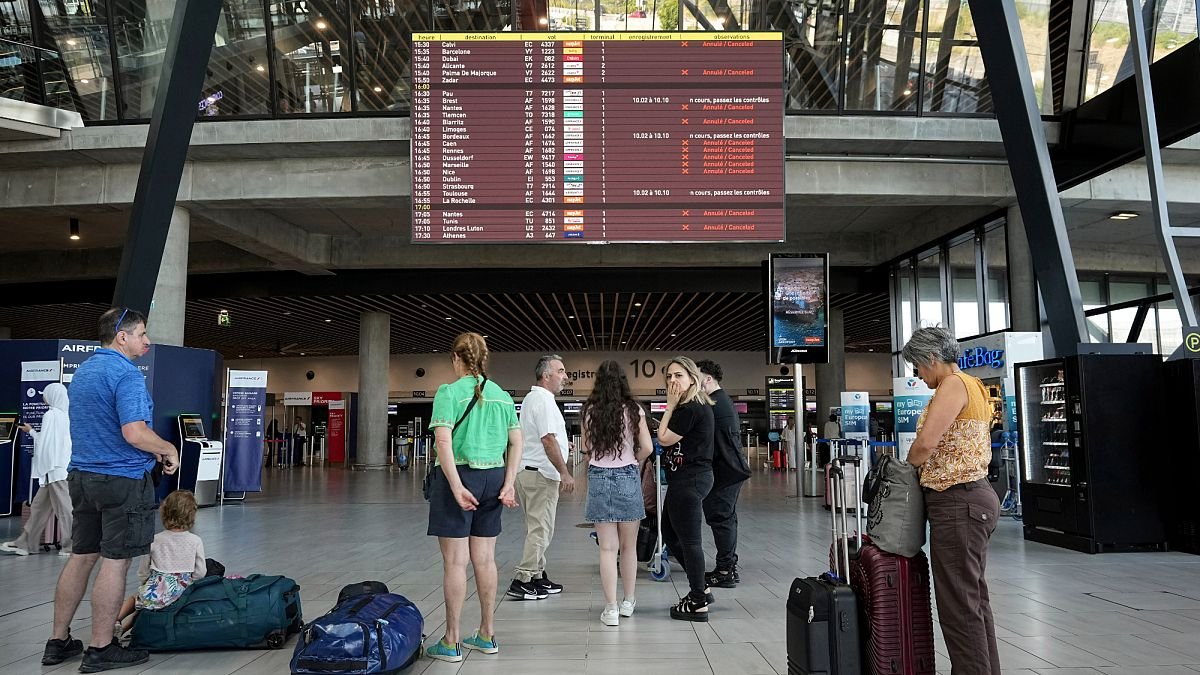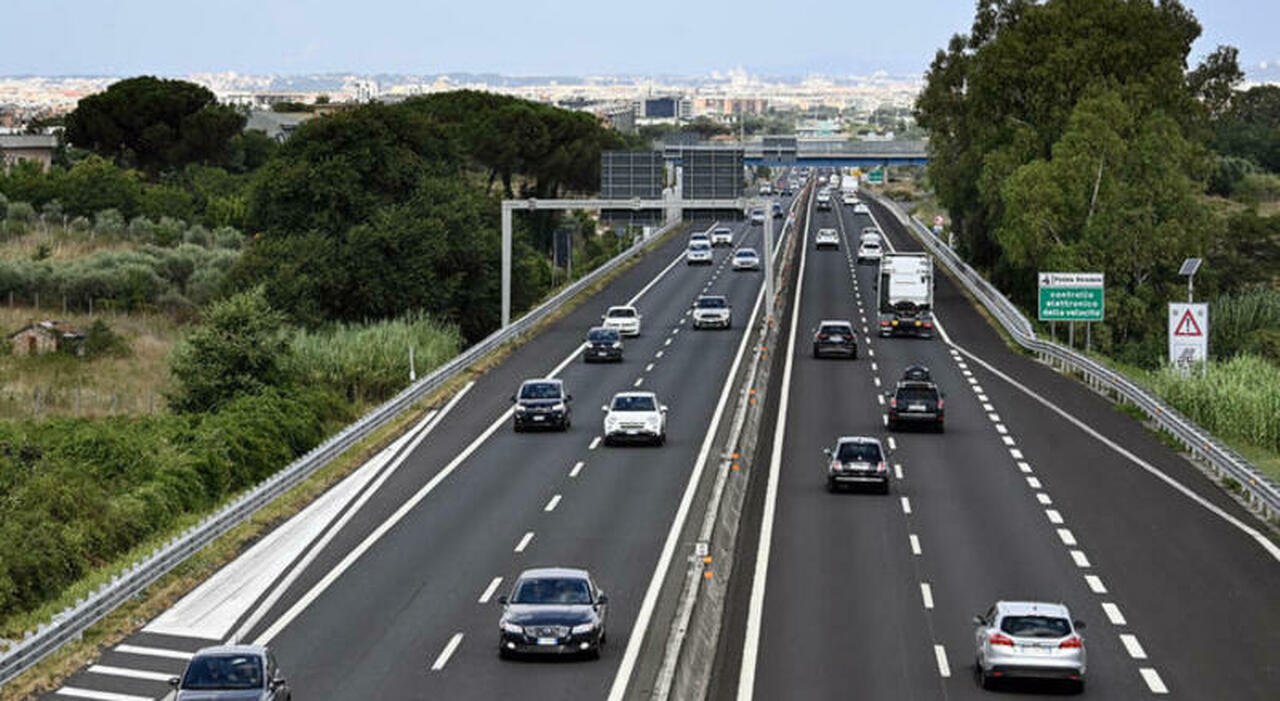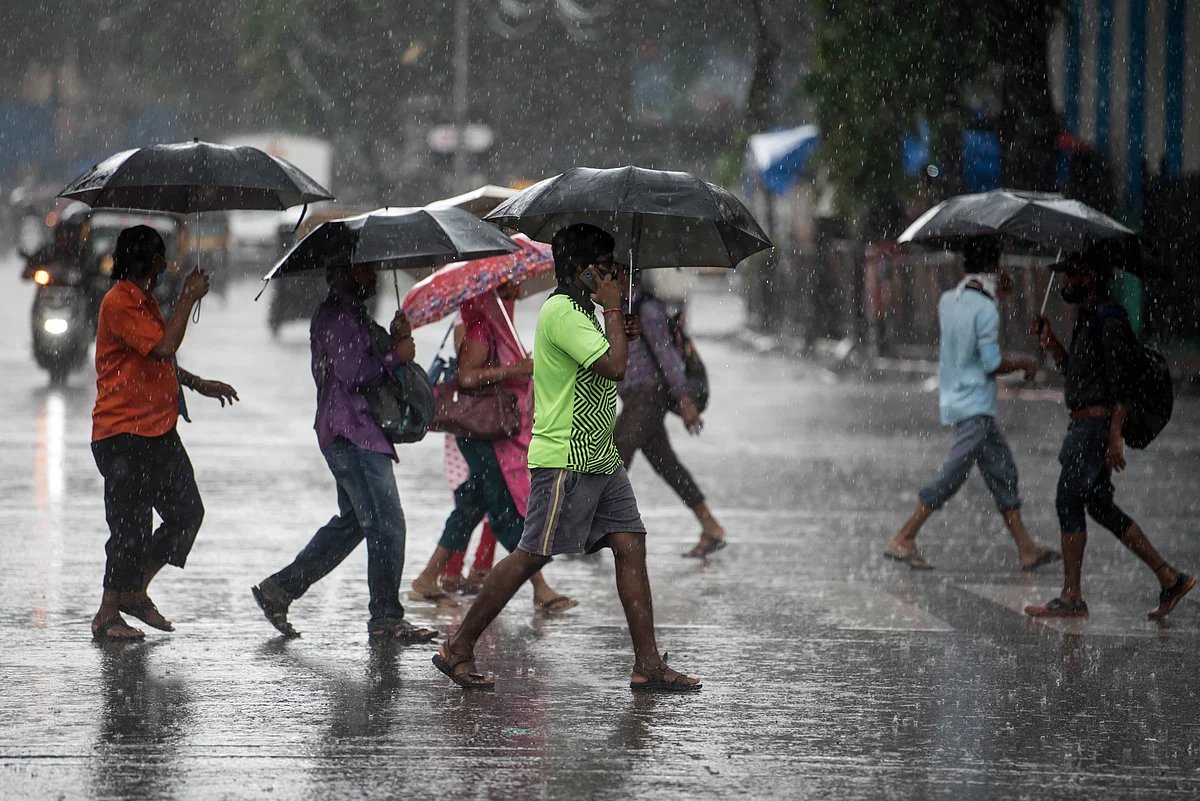Tips & Advices
Travelling in Europe this summer? Here are all the things that could ruin your holiday

ADVERTISEMENT
Whether you are going on holiday to relax, discover a new culture, visit friends or find yourself, having to deal with an unexpected emergency is unlikely to be on your dream itinerary.
Travelling in Europe, especially in the summer, is coming with increasing challenges as climate change throws weather curveballs at the continent and more regulations and tourist taxes are being brought in.
To avoid nasty surprises when you should be savouring a gelato or watching a sunset without a care in the world, here are things to watch out for and the ways you can be best prepared as a traveller.
Heatwaves and wildfires scorch Europe
There are several natural disaster risks around Europe that travellers should be aware of in summer.
Heatwaves have been scorching the continent since June, creating prime conditions for the outbreak of wildfires.
Over the weekend, Spain and Portugal entered a state of alert due to the worsening risk of blazes amid severe hot weather.
Temperatures hovered around 40 degrees Celsius or over in areas of the Iberian Peninsula on Sunday.
Greece and Türkiye have been battling wildfires throughout the summer, with thousands of residents forced to flee their homes and tourists evacuated.
Some areas of Italy, including the island of Sardinia, and France have also been affected.
Heatwaves themselves are also dangerous for travellers. They come with increased health risks, especially for older people or those with preexisting medical conditions.
Southern Europe sees rise in seismic activity
Popular holiday destinations around the Mediterranean, including Crete, Santorini, Naples, Sicily and Türkiye, have all been affected by earthquakes or volcanic eruptions this summer.
Although they haven’t caused serious damage or casualties, they are still alarming to experience as a visitor and could mean having to evacuate your accommodation midway through your trip.
There is growing concern amongst travellers about booking to visit tremor-prone destinations. In Santorini, one of Greece’s most visited destinations, local tourism officials estimate that arrivals could fall by as much as 25 per cent this year.
How travellers can prepare for natural disasters and weather extremes
A key precautionary measure when visiting extreme weather-prone destinations is staying informed of any local warnings.
Before your trip, research the specific area you’re visiting and be aware of heat alerts, seismic risks, fire danger ratings and local emergency procedures.
Ensure that your mobile phone is registered to receive emergency alerts in the area where you are staying. You can do this by going into Settings, followed by Notifications, and Enabling Alerts.
Monitor local news, weather forecasts, and fire updates through official channels like emergency apps and websites.
If there is a heatwave warning during your trip, take precautionary measures like carrying extra drinking water or avoiding high-energy outdoor activities in the middle of the day. Follow local advice about what to do and what not to do during periods of prolonged high temperatures.
Older travellers and those with certain health conditions should be especially careful not to exert themselves.
If your itinerary involves outdoor adventure, it might be worth asking your travel provider if you can change your plans or dates if a heatwave is expected.
Ensure you have the right travel insurance for extreme weather coverage
When booking travel insurance, make sure you choose a policy that will refund you or entitle you to compensation should extreme weather or a natural disaster affect your holiday.
This is particularly important if you choose not to go ahead with your trip, even if the airline, tour operator or accommodation has not cancelled your bookings.
This is because, without an official ‘no-go’ warning from the government, travellers who choose not to go ahead with their trip are unlikely to receive reimbursement or compensation, as this is considered “disinclination to travel”.
The vast majority of travel insurance policies will also not cover situations of “loss of enjoyment” due to natural disasters or extreme weather, which includes being unable to leave your hotel.
Travellers can only expect refunds if their flights or accommodation are cancelled by airlines, providers or tour companies.
Some insurance policies include trip disruption or natural disaster cover, but not every company will offer this, so make sure you have the correct insurance before you leave.
New tourist taxes, entry fees and visitor caps
Dozens of destinations have brought in tourist taxes, entry fees to attractions, and visitor caps this year.
The hotspot Greek islands of Santorini and Mykonos both now charge a €20 cruise passenger levy during peak season, with Santorini maintaining a daily cruise visitor cap of 8,000.
The capital, Athens, has brought in a visitor cap to protect its most popular ancient site.
The Acropolis now only permits 20,000 visitors per day with mandatory timed entry tickets.
In Spain, Barcelona has increased its municipal tourist tax to €6.75 per night for guests staying in five-star hotels.
The surcharge is in addition to the standard nightly tourist tax (now €3.50) paid to the region, meaning a week-long stay in a five-star hotel will cost €47.25 on top of the room rate.
Ibiza has started limiting the number of tourist cars and caravans that can visit.
From 1 June to 30 September, the number of vehicles used by non-residents will be capped at 20,168, and you’ll need to get a permit if you do want to drive onto the island, which costs €1 per day.
In Italy, the archaeological site of Pompeii has introduced a daily visitor cap of 20,000. Visitors are recommended to purchase tickets in advance online to avoid long queues.
Italy’s capital city, Rome, has brought in a visitor cap for the Colosseum set at 3,000 at a single time.
Sardinia’s spectacular beaches are feeling the strain, and several now have visitor limits or booking requirements.
Crescent-shaped Tuerredda beach requires visitors to book via an app in advance and has been capping visitor numbers at 1,100 per day since 2020.
For the full list of beaches with restrictions, see here.
One levy you don’t need to worry about anymore this year is the Venice entry fee, which ended in July.
If you are flying into Türkiye, be aware that the Turkish Civil Aviation Authority (CAA) has imposed a new rule.
It requires passengers to remain seated with their seatbelts fastened until the aircraft reaches its designated parking spot and the fasten seatbelt sign is deactivated.
They must also wait for their row to be called to disembark the aircraft. Passengers violating the rules risk a $70 (€62) fine.
For other fees and taxes brought in before this year, see here.
Strikes and air traffic control struggles
Given the increase in passenger traffic in summer, strikes are more likely to take place as they are able to have a bigger impact.
For example, the General Union of Workers (UGT) has announced Spain-wide strikes at Azul Handling, part of the Ryanair group, from 15 August.
These will see a series of stoppages at all of its work centres and operational bases, including airports in Madrid, Barcelona, Seville, Malaga, Alicante, Ibiza, Palma de Mallorca, Girona, Tenerife South, Lanzarote and Santiago de Compostela.
They will take place every Wednesday, Friday, Saturday and Sunday until 31 December 2025.
Tens of millions of travellers are also expected to face delays this summer due to mass cancellations caused by air traffic control (ATC) strikes during peak travel periods.
The walkouts have already plunged flights into chaos in France, Spain and Italy.
What can travellers do to prepare for strikes?
There are several steps travellers can take to stay prepared and better informed about industrial action.
This includes checking government websites for official strike information as well as asking specific airlines and airports for the latest updates. Travellers are also advised to confirm the status of their flight before leaving for the airport.
If travel plans cannot be changed around strike dates, avoiding peak hours while heading to the airport and arriving with plenty of time to spare can help as well.
Having comprehensive travel insurance coverage is also advisable. If your flight is cancelled for any reason, the airline is obliged to offer you the choice between re-routing as soon as possible, re-routing at a later date, or a full refund within seven days.
However, the airline is not liable for any losses relating to accommodation, bookings or other knock-on effects of a delay or cancellation – only for the flight.
To make sure you are covered for additional losses, add travel disruption cover to your travel insurance policy in advance of your trip.
Tips & Advices
Essential Road Safety Tips for Summer Travel

Once again this year, the Highway Patrol, in anticipation of the massive summer exodus, wants to disseminate the useful vademecum to tackle and reach holiday destinations safely, advice that remains valid for any movement. Before setting off, it is good practice, first of all, to check the vehicle’s efficiency, with particular attention to the tire pressure and tread conditions which must not be less than 1.6 millimeters. Equally important, if the vehicle is equipped, is to also check the conditions of the spare wheel or otherwise the inflation kit. Check the engine fluid levels, brake pad wear, and therefore the correct functioning of all the vehicle’s lighting devices such as headlights, rear lights, brake lights, and turn signals. Equally important is the condition of the front and rear windshield wipers, whose proper functioning is essential for optimal visibility even in case of rain. The arrangement of the luggage must also be taken care of in such a way that the distribution of the loads does not unbalance the stability of the vehicle and, if using roof racks, always ensure they are well anchored. In case of transport, pets must be secured in the appropriate carriers. Before departure, avoid consuming large meals or drinking alcoholic beverages and possibly check the traffic and weather conditions along the route to be traveled. It is also reminded that it is mandatory for passengers in the front and rear seats to always wear seat belts and secure children in appropriate approved seats. For those traveling on two wheels, it is important to fasten the protective helmet properly and use protective measures. During the journey, proceed at a moderate speed, respecting the limits set by the road owner, exercising maximum caution if you decide to overtake using the appropriate lane. Traffic on the highway, the red and black flag days for August 2025. Avoid any distraction during the journey, especially using the smartphone, even for a very short moment because hundreds of meters are covered without the necessary attention. On the highway, it is reminded that it is allowed to occupy the emergency lanes only in cases of actual necessity, and if so, position the emergency triangle at least 100 meters from the broken-down vehicle, always wearing the reflective vest. Where possible, however, it is better to stop in the appropriate service areas. In any case, without further delay, contact the single emergency number (112) indicating the exact position and wait for the arrival of assistance. At the same number, all possible issues such as accidents, vehicles in trouble, objects on the road, or fires must be reported; in this regard, it is absolutely forbidden to throw cigarettes or matches out of the windows. In case of fatigue, it is advisable to reach a safe place for a stop, so as to resume normal attention conditions for safe and responsible driving. On the State Police website, in the area reserved for Italy’s Viability (https://www.poliziadistato.it/articolo/1815cb58d622d6ac985858152) the ‘Summer Exodus Plan 2025’ has been published where it is possible to find: – the intense traffic calendar (flags); – the mapping of the road and motorway sections most subject to traffic issues and related alternative itineraries (north – center – south and islands); – the geographical areas ordinarily subject to overflight by State Police and Carabinieri aircraft; – the railway police surveillance plan; – the mapping of speed detection systems (tutors) located on the motorway network.
© ALL RIGHTS RESERVED
This article is automatically translated
Tips & Advices
Mississippi school travel safety tips

JACKSON, Miss. (WJTV) – Mississippi parents and students are encouraged to stay safe while going to school and back home.
AMR in central Mississippi advised parents to teach their children the following rules to stay safe when traveling to or from school.
Getting on or off the bus:
-
Riders should stay outside the “danger zone” around the bus. The danger zone is ten feet wide all the way around the bus. For little children, say six “giant steps” At that distance from the bus, the bus driver can see a child.
-
If you drop something near the bus, first signal the driver and tell him or her. Never try to pick it up first because the driver may not be able to see you.
-
Always stay away from the wheels of the bus.
-
Hold on to the handrail on the bus.
-
Never assume other vehicles have stopped for the school bus. Keep watching for other vehicles as you walk in front of the bus.
-
If you must cross the street in front of the bus, walk at least ten feet ahead of the bus until you can turn around and see the driver.
-
Make sure the bus driver can see you.
-
Wait for a signal from the bus driver before beginning to cross.
-
When the bus driver signals for you to cross, walk across the road while also keeping an eye out for sudden traffic changes.
-
If you leave something on the bus, never go back to get it. The bus may already be moving and the driver might not see the child.
Getting to the bus stop:
-
Parents should walk smaller children to their stop.
-
Each child should be dressed in contrasting bright colors.
-
Leave home early enough to avoid running to the bus. Running to the bus can be dangerous.
-
Older children should watch the younger ones closely.
-
Children walking or standing in groups are easier for drivers to see than one child alone.
Waiting for the bus to arrive:
-
Always stand at least ten feet from the curb or edge of the road.
-
Do not run or play while waiting for the bus.
-
Do not take anything out of backpacks while waiting. That way, nothing gets dropped or blows away in the wind.
Getting on the bus:
-
Be sure the bus driver can see you and you can see the bus driver.
-
Enter the bus in a single file with the younger children first.
-
Never walk behind the bus.
While the bus is in motion:
-
Stay seated, facing forward.
-
Keep your hands to yourself.
-
Talk quietly. Don’t talk at all near railroad crossings so the driver can listen closely for sounds of a train.
-
Do not distract the driver.
-
Keep the aisles clear. Keep your belongings on your lap.
-
Do not block emergency exits with sports equipment or musical instruments.
Walking to and from school:
-
Always walk on the sidewalk when one is available.
-
Cross the street only at intersections or street corners. Do not “jaywalk.” If a crosswalk is painted on the street, use it.
-
Before you begin to cross the street, stop and look left, right and left again to spot oncoming cars.
-
If no cars are coming, it is safe for you to cross but continue looking left-right-left as you cross.
-
Do not dart into the street between parked vehicles.
Riding a bicycle to school:
-
Always wear a helmet when riding your bicycle.
-
Make sure that your helmet fits correctly.
-
Ride on the right side of the road in the same direction other vehicles are going.
-
If two or more bikers are together, ride one behind the other, not side by side.
-
Come to a complete stop before crossing each street.
-
Make sure clothes, shoes and the bicycle have reflective materials on them so drivers can see you more easily.
Thanks for signing up!
Watch for us in your inbox.
Subscribe Now
Copyright 2025 Nexstar Media, Inc. All rights reserved. This material may not be published, broadcast, rewritten, or redistributed.
For the latest news, weather, sports, and streaming video, head to WJTV.
Tips & Advices
Weather Updates Across India: Travel Disruptions, Flood Warnings And Safety Tips – Outlook Traveller
-

 Brand Stories3 weeks ago
Brand Stories3 weeks agoBloom Hotels: A Modern Vision of Hospitality Redefining Travel
-

 Brand Stories2 weeks ago
Brand Stories2 weeks agoCheQin.ai sets a new standard for hotel booking with its AI capabilities: empowering travellers to bargain, choose the best, and book with clarity.
-

 Destinations & Things To Do3 weeks ago
Destinations & Things To Do3 weeks agoUntouched Destinations: Stunning Hidden Gems You Must Visit
-

 Destinations & Things To Do2 weeks ago
Destinations & Things To Do2 weeks agoThis Hidden Beach in India Glows at Night-But Only in One Secret Season
-

 AI in Travel3 weeks ago
AI in Travel3 weeks agoAI Travel Revolution: Must-Have Guide to the Best Experience
-

 Brand Stories1 month ago
Brand Stories1 month agoVoice AI Startup ElevenLabs Plans to Add Hubs Around the World
-

 Brand Stories4 weeks ago
Brand Stories4 weeks agoHow Elon Musk’s rogue Grok chatbot became a cautionary AI tale
-

 Brand Stories2 weeks ago
Brand Stories2 weeks agoContactless Hospitality: Why Remote Management Technology Is Key to Seamless Guest Experiences
-

 Asia Travel Pulse1 month ago
Asia Travel Pulse1 month agoLooking For Adventure In Asia? Here Are 7 Epic Destinations You Need To Experience At Least Once – Zee News
-

 AI in Travel1 month ago
AI in Travel1 month ago‘Will AI take my job?’ A trip to a Beijing fortune-telling bar to see what lies ahead | China














You must be logged in to post a comment Login